Types of Scaffolding Used in Construction
In the world of construction, scaffolding is a fundamental structure that supports workers and materials as they perform tasks at height. Different types of scaffolding systems are available, each designed to suit specific needs based on the project requirements. This guide will explore the main types of scaffolding used in construction, providing an overview of each type, its benefits, and typical applications.
1. Ringlock Scaffolding
Ringlock scaffolding is a modular system known for its fast assembly and flexibility. This type uses unique rosettes, or rings, that provide multiple connection points for added stability. Each ringlock component is designed to support specific loads, making it a popular choice in both commercial and industrial applications.
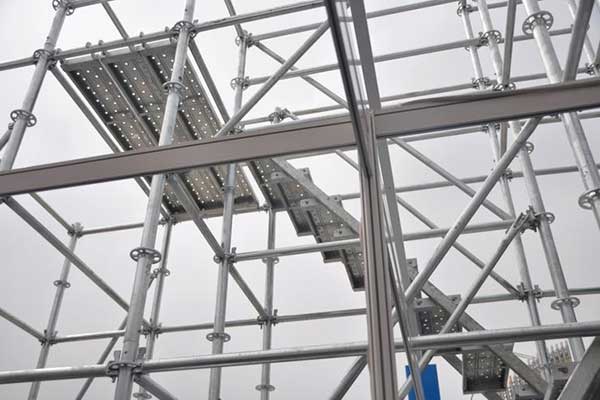
Advantages:
- Quick and efficient to assemble and dismantle
- Provides high stability and safety, even in challenging conditions
- Suitable for heavy-duty applications
Applications:
- Commonly used in construction sites requiring frequent scaffolding setup and breakdown
- Ideal for projects requiring significant weight-bearing capacity
2. Cuplock Scaffolding
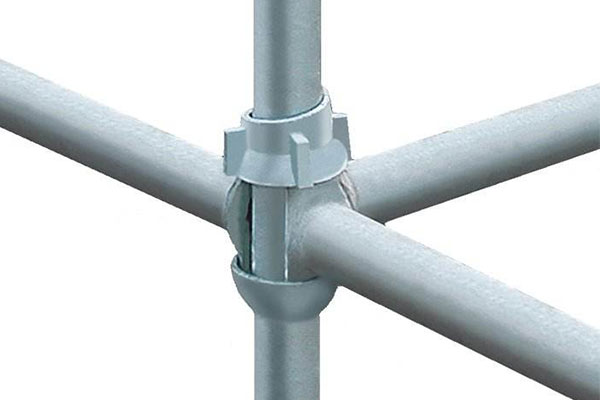
Cuplock scaffolding is a multipurpose system that is easy to assemble, even without bolts or nuts. It consists of a series of cup-shaped components that securely lock vertical and horizontal bars together. Known for its high load-bearing capacity, cuplock scaffolding is often used in projects that demand solid support structures.
Advantages:
- Fast and easy assembly
- High load-bearing capability
- Ideal for repetitive patterns, making it suitable for bridge or highway construction
Applications:
- Common in building facades and structural support in bridges and highways
- Suitable for both industrial and residential construction
3. Kwikstage Scaffolding
Kwikstage scaffolding is a modular system that is easy to set up and dismantle, making it popular for medium-to-large-scale construction projects. The system uses a unique wedge fixing design, where ledgers (horizontal bars) and transoms (support bars) are secured in place using wedge fixings. This design allows for a sturdy and versatile structure that can be configured for complex builds.
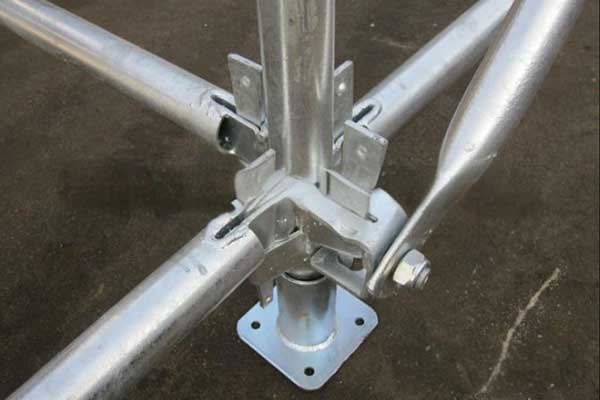
Advantages:
- Quick and simple to assemble with minimal tools
- High stability due to the rigid wedge lock system
- Versatile design that can accommodate complex structures and facades
Applications:
- Commonly used in commercial and residential building projects
- Suitable for projects requiring modular flexibility, like renovations and new builds
- Often chosen for projects with varying levels or where regular adjustments are necessary
4. Frame Scaffolding
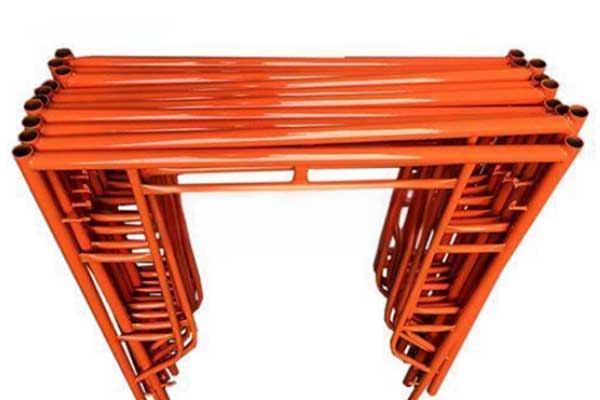
Frame scaffolding, also known as sectional scaffolding, consists of pre-fabricated vertical frames that are joined together horizontally with cross braces or ledgers. This type of scaffolding is modular and can be quickly assembled, providing a stable and secure working platform. The frames are usually made of steel or aluminum, making them both durable and lightweight. Frame scaffolding is one of the most common scaffolding systems used in construction due to its simplicity, speed of assembly, and versatility.
Advantages:
- Quick and easy to assemble and dismantle
- Lightweight yet strong, offering excellent stability
- Ideal for both low and medium-height projects
- Flexible and adaptable to different configurations and heights
Applications:
- Often used in residential, commercial, and industrial construction projects
- Ideal for work on building facades, exterior repairs, and painting
- Frequently used for access to interior and exterior walls during renovations or maintenance projects
5. Mobile Scaffolding
Mobile scaffolding, also known as rolling scaffolding, is a portable scaffolding system mounted on wheels, allowing it to be easily moved across the job site. It is commonly used for tasks that require frequent repositioning, such as maintenance, painting, or electrical work. Mobile scaffolding typically consists of a lightweight frame, adjustable height platforms, and lockable wheels for stability when stationary.
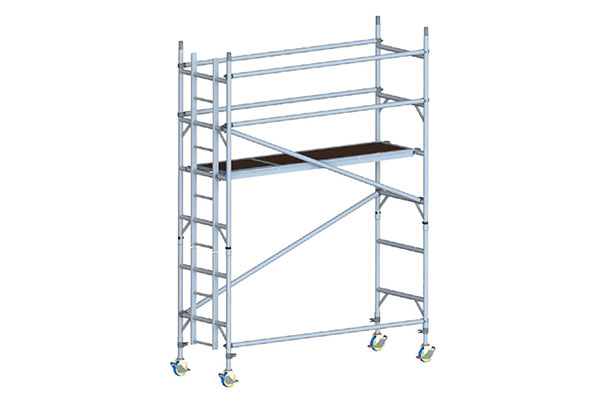
Advantages:
- Highly portable, making it easy to move between work areas
- Ideal for tasks that require frequent repositioning or quick access to different parts of a building
- Can be easily adjusted in height, providing flexible access for various tasks
- Space-saving and efficient for smaller workspaces
Applications:
- Commonly used for interior maintenance, repairs, and painting
- Ideal for tasks such as electrical installations, drywall work, or signage installation
- Frequently used in commercial and residential buildings for short-term, light-duty applications
6. Tube and Clamp Scaffolding
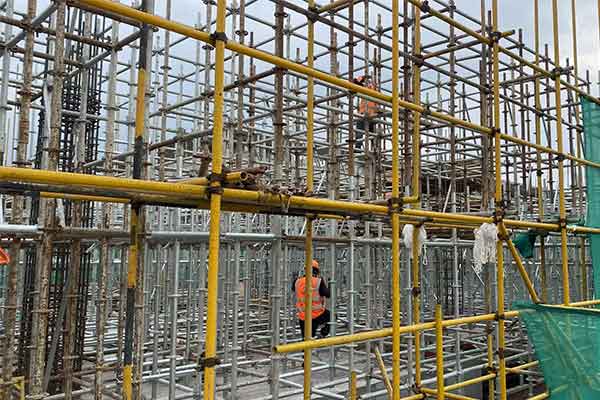
Tube and clamp scaffolding is one of the oldest and most adaptable types. This system consists of steel or aluminum tubes connected by clamps or couplers, allowing for versatile configurations. Workers can create scaffolding structures to fit various building shapes, making it an ideal solution for complex or irregularly shaped projects.
Advantages:
- Highly versatile and adaptable to any structure
- Suitable for both high-rise and low-rise construction
- Strong and stable
Applications:
- Used in industrial projects with complex or irregular designs
- Often seen in bridge and tunnel construction due to its flexibility
7. Steel Scaffolding
Steel scaffolding is constructed using steel tubes, which are exceptionally durable and secure. Its robust construction makes it an excellent choice for high-rise buildings and projects where worker safety is paramount.
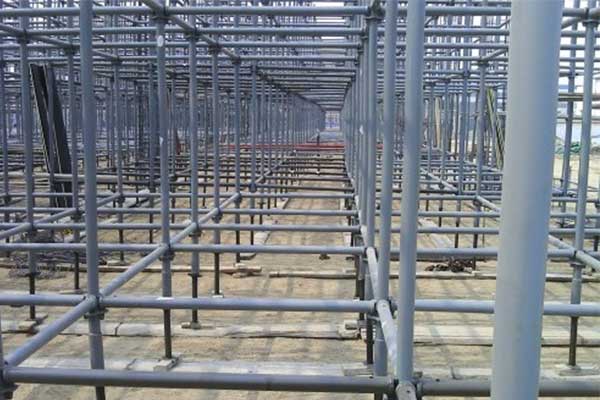
Advantages:
- Extremely strong and durable
- High fire resistance, making it suitable for hazardous sites
- Capable of supporting heavy loads
Applications:
- Often used in high-rise buildings and large commercial structures
- Suitable for projects that require heightened safety standards
8. Single Scaffolding
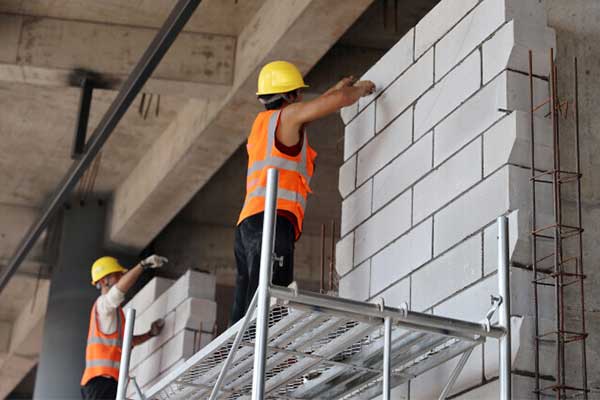
Single scaffolding, also known as bricklayer’s scaffolding, is one of the simplest types of scaffolding and is primarily used in masonry work. It consists of a single row of vertical supports (standards) placed at regular intervals parallel to the wall being constructed. Horizontal supports (ledgers) connect the vertical posts, and cross braces provide extra stability. This type of scaffolding is often used for bricklaying and similar tasks where workers need easy access to a single wall.
Advantages:
- Simple and easy to set up
- Cost-effective for low-height construction work
- Requires minimal materials, making it suitable for small projects
Applications:
- Widely used in masonry and bricklaying for walls and low-rise buildings
- Suitable for straightforward tasks where minimal height is needed
- Ideal for projects with limited budgets or short timelines
9. Double Scaffolding
Double scaffolding, also known as mason’s scaffolding or independent scaffolding, is a more robust system compared to single scaffolding. It consists of two parallel rows of vertical supports (standards) with horizontal ledgers and cross braces connecting them. This system is generally used for stone masonry or other work that requires a high level of support. The additional row of standards provides greater stability, making double scaffolding ideal for larger structures or more demanding tasks.
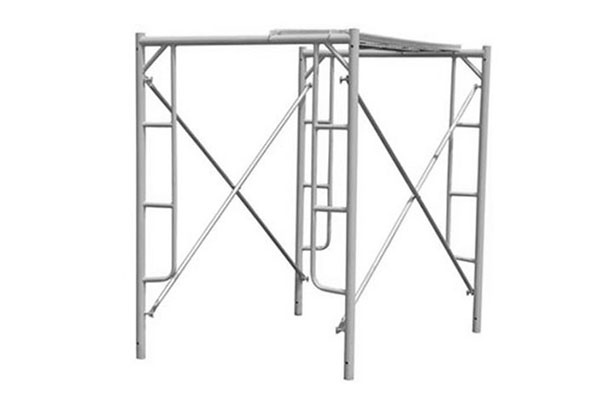
Advantages:
- Provides added stability and safety compared to single scaffolding
- Suitable for heavy-duty applications, such as stone masonry
- Ideal for use in situations where the wall is too thick to support a single row of standards
Applications:
- Commonly used in stonework, bricklaying, and other masonry projects
- Suitable for tall and heavy structures requiring extra support
- Often used in areas where workers need access to both sides of a wall or structure
10. Suspended Scaffolding
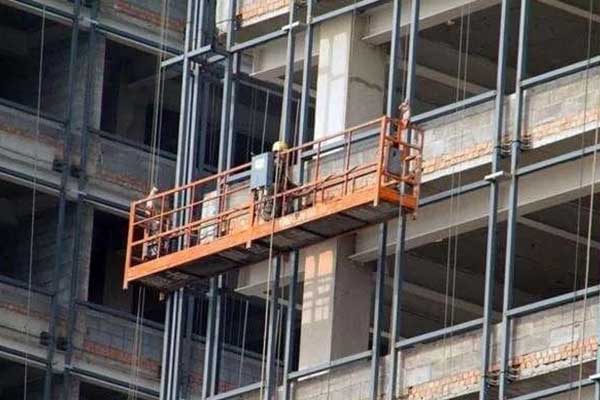
Suspended scaffolding is hung from the roof or upper portion of a building and can be raised or lowered as required. This type is often used in painting, window cleaning, and repair work, where workers need access to vertical surfaces at various heights.
Advantages:
- Flexible height adjustments
- Efficient for light maintenance and cleaning tasks
- Minimal ground space is required
Applications:
- Widely used for window cleaning and exterior building maintenance
- Ideal for high-rise buildings where ground-level setup is limited
11. Trestle Scaffolding
Trestle scaffolding is built on tripods or movable ladders, typically for tasks at lower elevations, like interior painting or ceiling work. It’s easy to set up and doesn’t require extensive equipment, making it ideal for lightweight tasks.
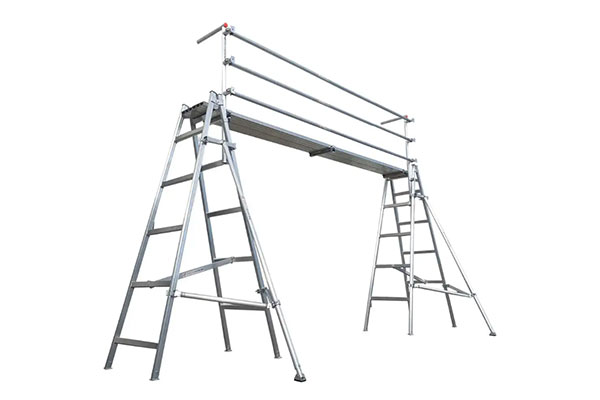
Advantages:
- Easy and quick to install for low-height applications
- Portable and suitable for interior work
- Cost-effective for temporary use
Applications:
- Commonly used for interior tasks such as painting, plastering, and ceiling work
- Suitable for projects requiring minimal height and limited space
12. Patented Scaffolding
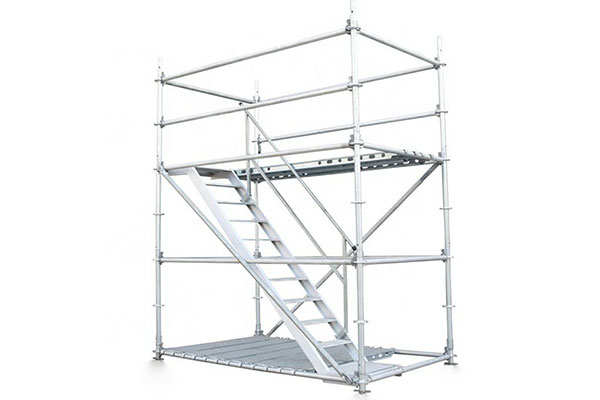
Patented scaffolding consists of prefabricated frames and components, which can be quickly assembled. Usually made of steel, patented scaffolding systems often feature special brackets that make them adjustable to different heights, adding convenience to specific construction needs.
Advantages:
- Pre-assembled components allow for fast setup and teardown
- Height adjustable for ease of use in different projects
Applications:
- Suitable for residential construction due to its ease of use
- Ideal for small-scale projects requiring rapid assembly
In Conclusion
Understanding the different types of scaffolding used in construction can help you choose the best system for your project’s needs, ensuring efficiency, safety, and productivity. Whether for high-rise buildings, industrial structures, or simple interior projects, selecting the right scaffolding type is key to achieving successful and safe construction outcomes.
